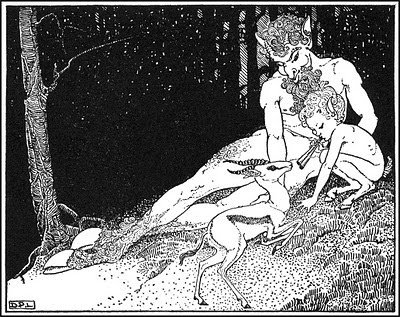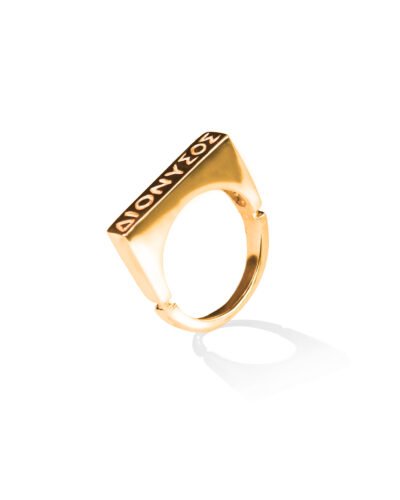Satyr, Pan & Faun: Trickster, Dionysus follower or Wise spirit?
Satyr, Pan & Faun

Merriam-Webster dictionary:
Satyr – a sylvan deity in Greek mythology having certain characteristics of a horse or goat and fond of Dionysian revelry.
I’ve always been a huge admirer and lover of Greek mythology, of gods and deities, heroes and legendary creatures.
So I came up with the idea of this Satyr ring a long time ago, because I’ve been fascinated by the complex nature of this spirit. Just imagine this human-animal hybrid, a wise spirit, sensual woodland creature and dancer! I think they’re pretty cool. And of course I absolutely love the way satyrs embody the power of nature in all its splendour, with all its bright and dark sides. So, let’s take a closer look at these characters and see what makes them so much fun.
What are satyrs?

A woodland creature depicted as having a human torso, goat legs and tail, pointed ears, horns and beards. They were a race of fertility spirits of the countryside and wilderness. As companions of Dionysus they were usually shown drinking, dancing and playing flutes and chasing the nymphs. In a broader sense, the satyr symbolizes the duality of human nature, consisting of emotions and reason.
Satyrs are also known to be tricksters, prophets and wisdom keepers, all at the same time! And on the other hand, they were sensual creatures free of any prohibitions, moral and social norms. So usually satyrs had no moral or social aspect whatsoever, and were simply the embodiment of pure, basic instinct. They were the very opposite to urbanity and civilization itself. But over the course of Greek history, satyrs gradually became portrayed as more human and less wild.
The enduring appeal of Satyr lies in his duality – he is both wild and civilized, both mischievous and protective, both lover and fighters. He embodies the primal, untamed power of nature while also exhibiting human-like traits such as music, dance, and wine-making.
What do we know about Pan?

Now, let’s talk about Pan. The parentage of Pan is unclear; generally he is the son of Hermes and a nymph. Plato also called him ¨the double-natured son of Hermes¨. He’s often depicted as having the body of a man and the legs, horns, and ears of a goat, and he’s known for his wild, unkempt appearance. With his homeland in rustic Arcadia, Pan was recognized as the god of shepherds, hunters, the flocks, the mountain forests and meadows.
Despite his wild spirit, Pan was also seen as protector of nature. He was said to be fierce defender of the forests and the creatures that lived within them, and would often punish those who harmed the natural world or its inhabitants.
This mischievous god is the protector of the wild, and he loves nothing more than playing his pan flute (a musical instrument consisting of multiple wooden pipes of gradually increasing length) and causing chaos. Pan is also incredibly vain, and he loves to play practical jokes on other gods and mortals.
His name is the root word of “panic“. The Greeks believed that when accidentally awakened from his nap he could give a great terrifying shout. From this aspect of Pan‘s nature, Greek authors derived the word “panikos“, “sudden fear”.
Faun vs. Satyr. What is the difference?

The Romans identified satyrs with their native nature spirits, fauns. It is derived from Faunus, the name of an ancient Italic deity of forests, fields, and herds, who from the 2nd century BCE was associated with the Greek god Pan.
But the main difference between them was their behaviour and nature. Fauns were described as humble, gentle and innocent with handsome and attractive appearance. Satyrs, as we know, were the exact opposite. Fauns are known to be naïve and foolish. On the other hand, satyrs are wise and have great knowledge as well.
Today, Fauns continue to capture the imagination of artists, writers, and filmmakers around the world. They are a reminder of the enduring power of myth and the timeless appeal of creatures that straddle the line between the human and the divine.

Related Products
-
King of the Forest
155,00€
Recent Posts
OUR NEWSLETTER
Subscribe to our newsletter and get 10% off your next purchase!
Satyr, Pan & Faun: Trickster, Dionysus follower or Wise spirit? Read More »









































































